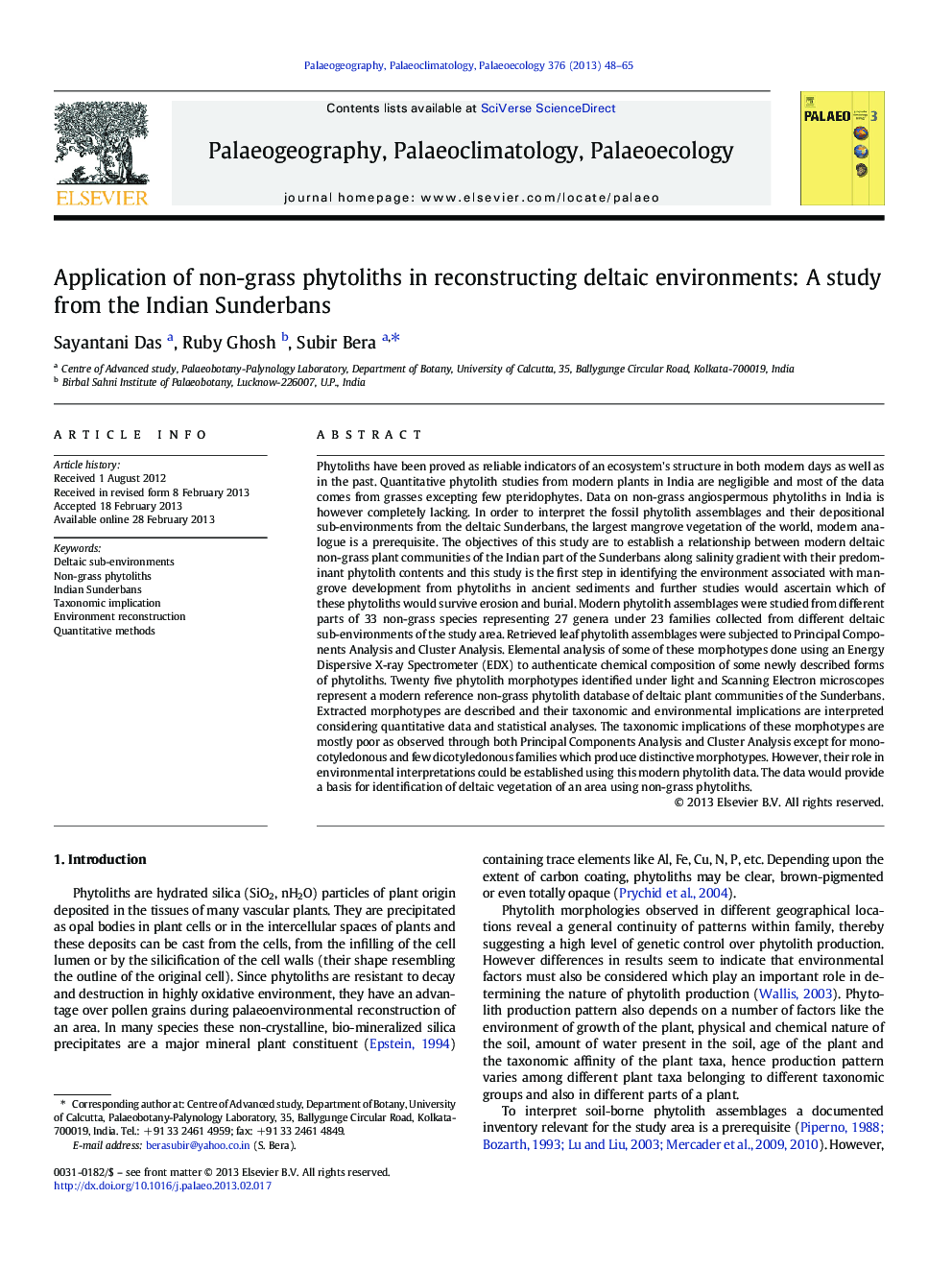| کد مقاله | کد نشریه | سال انتشار | مقاله انگلیسی | نسخه تمام متن |
|---|---|---|---|---|
| 4466602 | 1622210 | 2013 | 18 صفحه PDF | دانلود رایگان |

• Study phytolith profile of non-grass plants from Indian Sunderbans.
• Exploring taxonomic implication of non-grass phytoliths in deltaic plants.
• First step in the application of non-grass phytoliths in discriminating deltaic sub-environments.
Phytoliths have been proved as reliable indicators of an ecosystem's structure in both modern days as well as in the past. Quantitative phytolith studies from modern plants in India are negligible and most of the data comes from grasses excepting few pteridophytes. Data on non-grass angiospermous phytoliths in India is however completely lacking. In order to interpret the fossil phytolith assemblages and their depositional sub-environments from the deltaic Sunderbans, the largest mangrove vegetation of the world, modern analogue is a prerequisite. The objectives of this study are to establish a relationship between modern deltaic non-grass plant communities of the Indian part of the Sunderbans along salinity gradient with their predominant phytolith contents and this study is the first step in identifying the environment associated with mangrove development from phytoliths in ancient sediments and further studies would ascertain which of these phytoliths would survive erosion and burial. Modern phytolith assemblages were studied from different parts of 33 non-grass species representing 27 genera under 23 families collected from different deltaic sub-environments of the study area. Retrieved leaf phytolith assemblages were subjected to Principal Components Analysis and Cluster Analysis. Elemental analysis of some of these morphotypes done using an Energy Dispersive X-ray Spectrometer (EDX) to authenticate chemical composition of some newly described forms of phytoliths. Twenty five phytolith morphotypes identified under light and Scanning Electron microscopes represent a modern reference non-grass phytolith database of deltaic plant communities of the Sunderbans. Extracted morphotypes are described and their taxonomic and environmental implications are interpreted considering quantitative data and statistical analyses. The taxonomic implications of these morphotypes are mostly poor as observed through both Principal Components Analysis and Cluster Analysis except for monocotyledonous and few dicotyledonous families which produce distinctive morphotypes. However, their role in environmental interpretations could be established using this modern phytolith data. The data would provide a basis for identification of deltaic vegetation of an area using non-grass phytoliths.
Journal: Palaeogeography, Palaeoclimatology, Palaeoecology - Volume 376, 15 April 2013, Pages 48–65